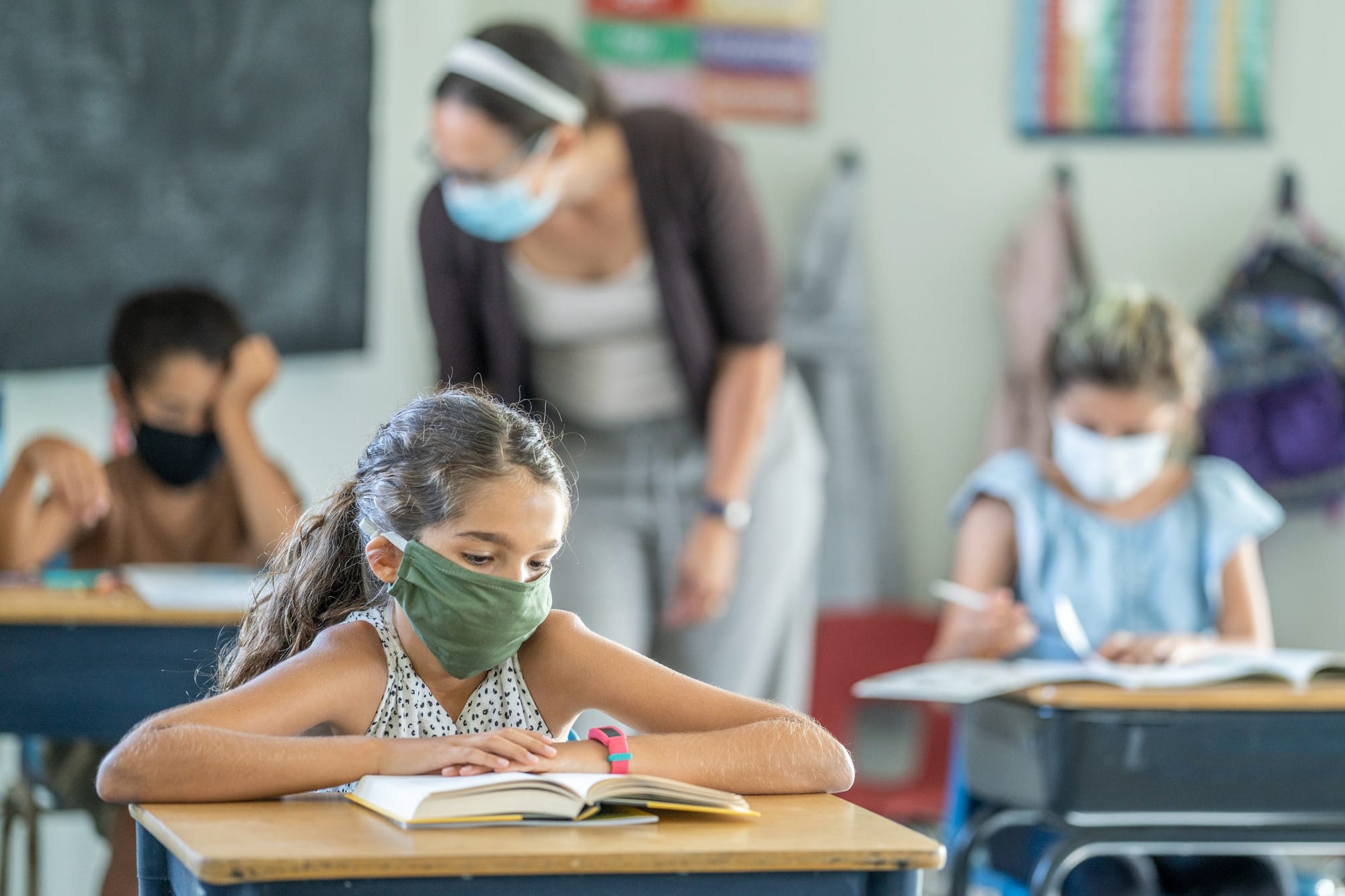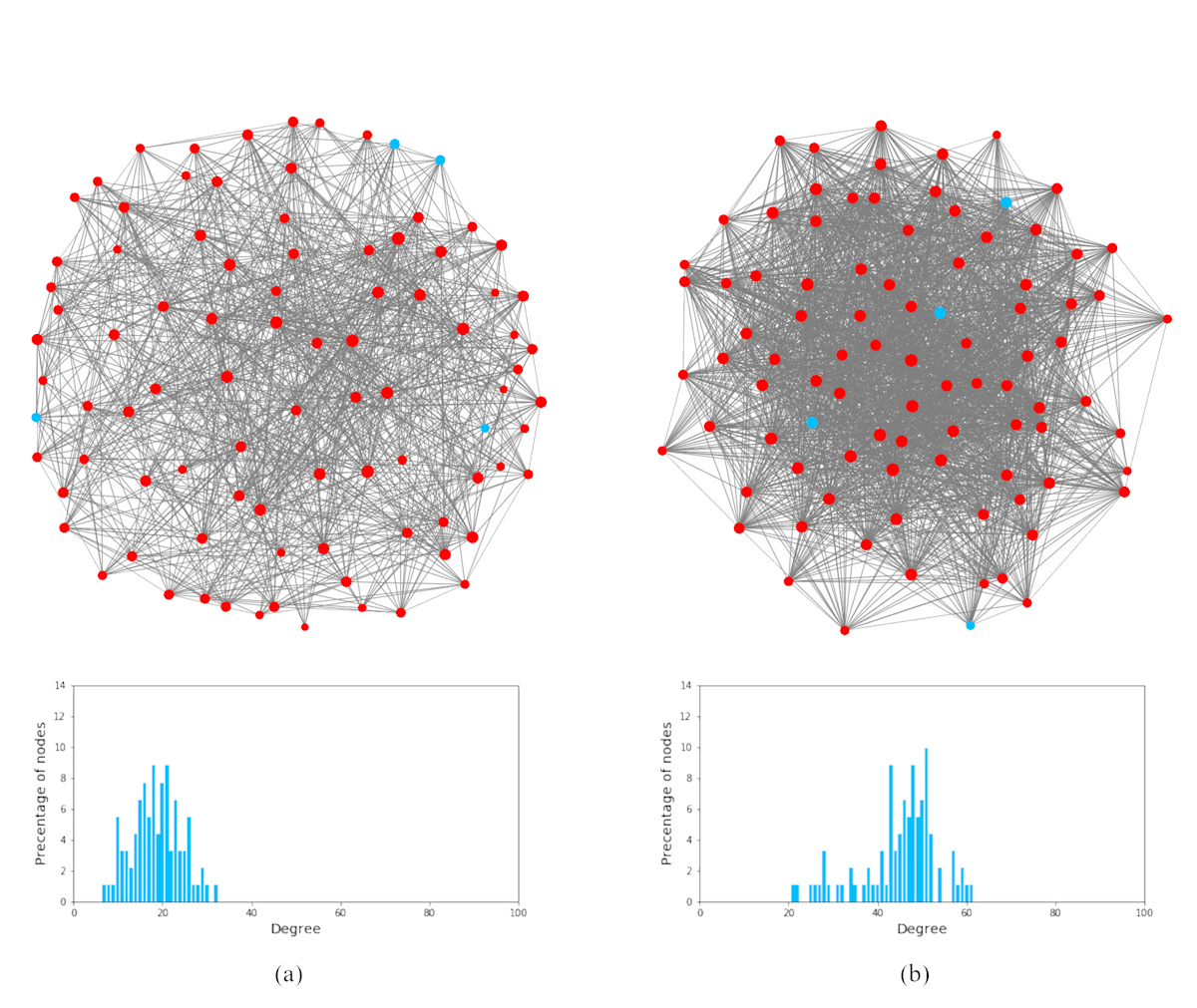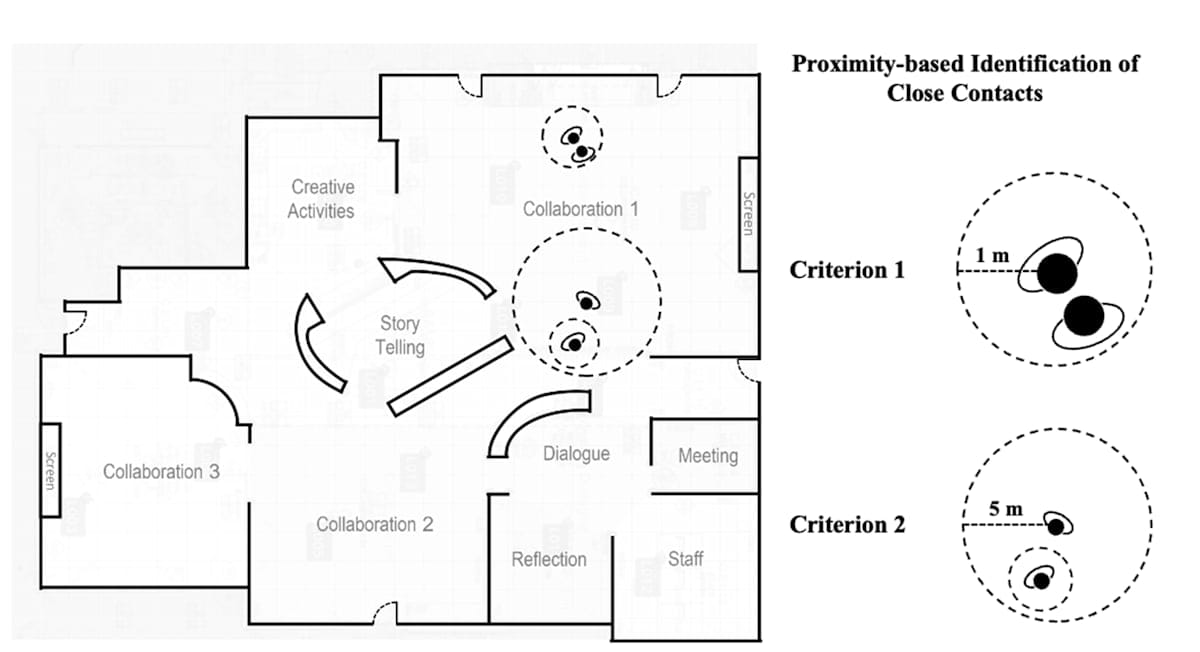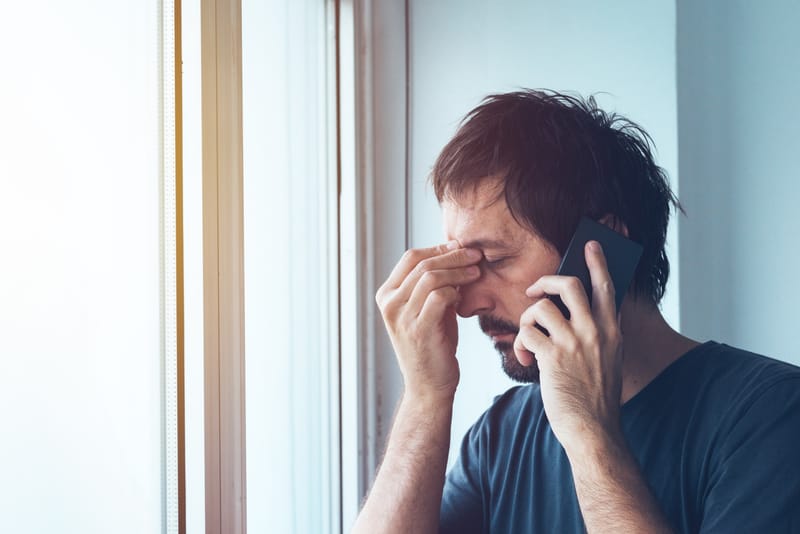
The experiment began – pre-COVID-19 – as a way for Monash researchers to study the way kids and teachers move around open-plan classrooms. It was hoped the findings would add to the research on education in modern school rooms with no walls and large groups.
But then the pandemic suddenly intervened, as it did for so much research involving human subjects, and as it did for the concept of face-to-face schooling. The classroom project couldn’t continue.
But could it be pivoted away from strictly education research into questions about COVID-19 and its many variants?
It could – and that’s what happened.
The initial team was from Monash’s faculties of IT and Education: PhD candidate Lixiang Yan, Dr Roberto Martinez-Maldonado, Professor Dragan Gašević, Professor Joanne Deppeler, and Emeritus Professor Deborah Corrigan.
After COVID-19 arrived, researchers from the School of Public Health and Preventive Medicine, including epidemiologists, joined. They were Associate Professor James Trauer, Dr Stella Tajic, Associate Professor Danijela Gašević, Professor Dragan Ilic, and lecturer and researcher Holy Wild.
In a paper published now in the Journal of Global Health, the researchers show that transmission of the virus in pre-pandemic open-plan classrooms would have been highly dependent on the variant, with Delta and Omicron showing significantly higher infection growth rates than previous variants, resulting in more community transmission.
The study also shows a significantly higher risk of student-to-student, student-to-teacher, and teacher-to-student transmission with Delta and Omicron. The study was conducted with and without data regarding the public health measures of masks and social distancing.

The paper concludes: “Our findings illustrated that despite a lower frequency of close contacts, teacher-to-teacher close contacts demonstrated a significantly higher risk of per contact transmission of SARS-CoV-2 compared to student-to-student close contacts.
“This was especially significant with the Omicron variant … with public health measures being essential in reducing the risk of onward transmission within school environments.”
Associate Professor Trauer says unchecked transmission would be inevitable in these classroom contexts:
“One of my main messages is that in a setting like this, you have to ensure that everybody is doing their physical distancing, or wearing their face masks, because there will always be the potential for transmission for just about anybody in that setting. It's quite a densely connected population.”
Schools in Australia fared well; they were not a driver of transmission – until Delta and then Omicron.
“So, in spite of these settings being so densely connected, and until we got the really super-transmissible variant,” Associate Professor Trauer says, “transmission didn't take off spontaneously, which probably indicates how much less infectious per interaction children are. It seems pretty clear that they're biologically less likely to be part of transmission given the same social interaction.”
The data was collected from July until September in 2019 at a Melbourne primary school, involving 98 Year 6 kids and six teachers. They were given Bluetooth wristbands or tags to track their movements every 200 milliseconds.
“The technology is pretty new,” says Yan. “We used something called ‘angle of arrival’ [a method of high-precision positioning], and we tracked them to see how they interact with each other.
“We had the data to look at how an innovative learning space would facilitate learning, but then COVID happened, so we used existing evidence on COVID, and modelled it with actual contact data from the school to see how COVID could spread in this particular setting if one infectious student or one infectious teacher was introduced into the space.”
Each student had about 49 interactions per day, and each teacher 47 contacts with students. If things played out as they had pre-COVID – with no masks or distancing – everyone probably gets infected if it’s the Omicron variant, he says.
“With Delta and Alpha the probability is a bit lower, but this is still around 25% for Alpha, and around 75% for Delta. But with public health measures the transmission rate reduced significantly.
“So we can see there's considerable potential with public health measures for reducing transmission in schools, suggesting interventions in schools are potentially effective.”
Associate Professor Trauer adds that school closures “may not have been the most effective intervention” for the original strain of COVID.
The researchers accept that their findings are limited because the tracking did not collect data from outside the building – for example, in play, bathroom or eating areas at recess or before or after school. They also clearly state the data only applies to open-plan classrooms, and not traditional walled ones.
The paper also makes it clear that while the positioning data can identify close contact, it can’t identify the exact nature of the contact.
“For example,” it says, “we did not consider participants’ body orientation during close contact. In instances where participants were sitting back-to-back with each other, the risk of transmission from droplets and airborne exposure could be lower than in face-to-face scenarios.”

The model could be used in similar settings such as office workplaces and aged care, but the researchers aren’t yet sure. Associate Professor Trauer says open-plan classrooms are unique spatially, and for the amount of people in them.
“I think overall what we found is that classrooms are extremely highly connected. Even in settings where you've got these different learning groups, they're still interacting a lot.
“The teachers are in the thick of it, but there's a huge amount of interaction between a broad range of children in these groups. It's a pretty good explanation for why, once a respiratory virus gets transmissible enough to transmit within children, you can get transmission taking off in classrooms pretty easily.
“We looked at COVID, but flu is actually the classic example of where you have transmission taking off very intensely in classrooms. The adults are the spill-over group.
“And I think when you see the density of connections like this, you can understand why, when you get those more infectious respiratory viruses, they can sustain themselves, and really you can get these hubs driving transmission that occur within the classroom.”





